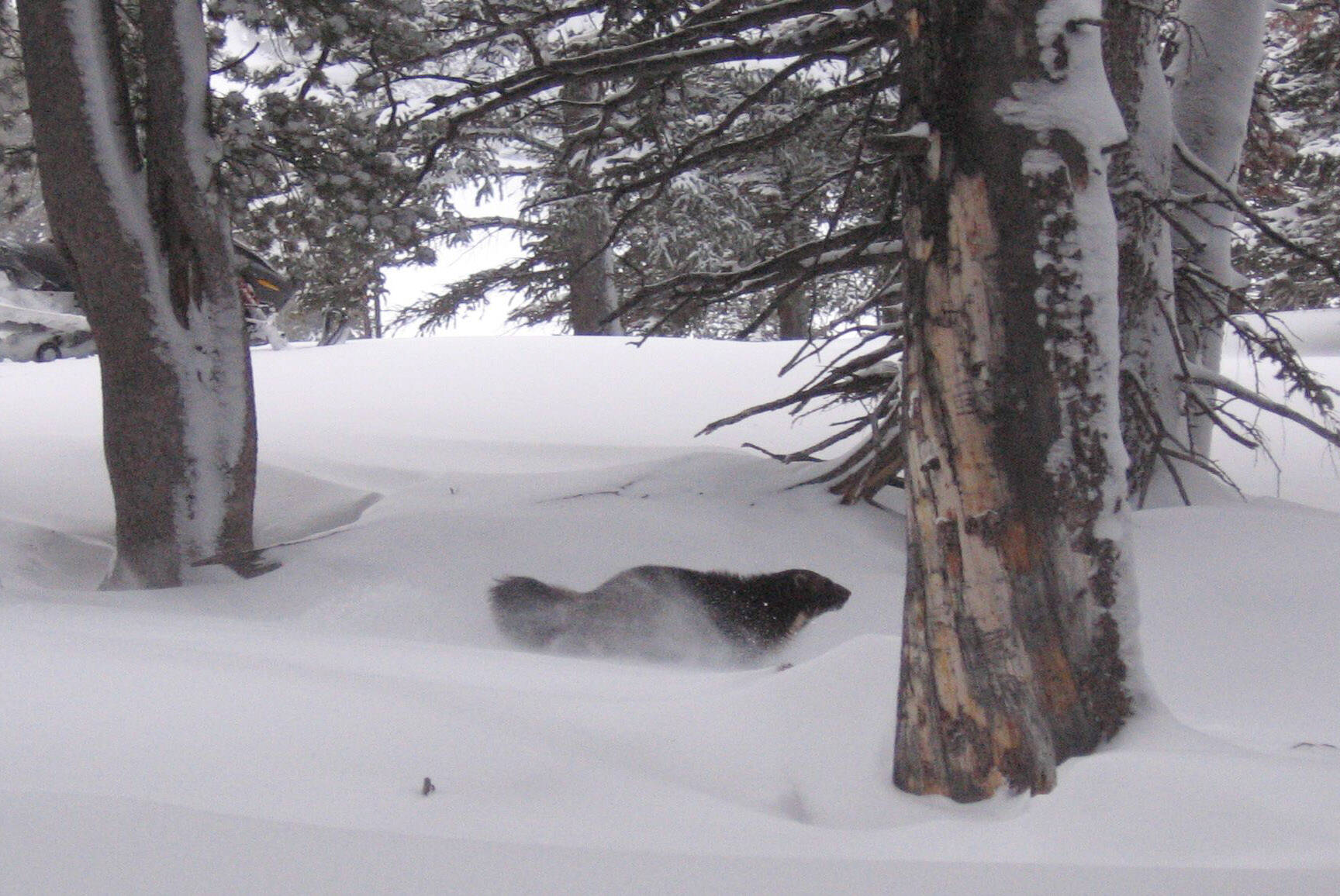As I contemplated a topic for this week’s Refuge Notebook article, I turned to a few of my trusted colleagues, throwing out a few ideas. It wasn’t one of my ideas that struck a chord, but one from one of the biologists on the team.
He suggested I write about the wolverine, a species I know, and that also captures people’s imagination. In doing so, prompting me to remember that an old friend and fellow wolverine researcher from Alaska sent a recent scientific publication she co-authored on wolverine here on the Kenai — sharing something from my past and relating it to my present.
As I reread their paper to write this article, I was reminded of the start of a wolverine research project my husband and I undertook just a little over 20 years ago in the lands surrounding Yellowstone National Park. This place is known as the Greater Yellowstone Ecosystem.
We did what every good scientist does when starting a new research project, delve into the literature to learn what was known and what gaps remained in our understanding.
In the Greater Yellowstone, the status of the wolverine was unknown, as were the factors influencing wolverine survival. Publications on what we did know, at the time, included research by Alaska biologists, including Howard Golden, here on the Kenai and Audrey Magoun in the Brooks Range.
With far more high-tech systems for understanding genetics than researchers had before we embarked on our study of Greater Yellowstone wolverines, a recent study found that wolverine populations on the Kenai may be genetically distinct from other wolverine populations in Alaska.
So, what does this mean?
Genetically distinct means that the wolverines here on the Kenai were naturally cut off from other wolverine populations. Yet, knowing what we know about wolverines, if there is a species that could travel the distances to connect with other populations, even across the narrow isthmus that connects the Kenai Peninsula with mainland Alaska, it would be the wolverine.
One of our radio-tagged wolverines traveled more than 513 straight-line miles over extremely rugged terrain to move to a new territory!
Genetically distinct or not, we can apply what we know to guide decisions to conserve a species like the wolverine. For example, in Alaska and the Lower 48, we know wolverines are highly mobile, are territorial, and require large home ranges resulting in a species that will naturally occur in lower densities. Thus, they are a species that is more influenced by changes in the landscape.
Information gathered from tracking wolverines with radio collars or looking at genetic data demonstrates how critical it is for wolverine populations to be connected to other wolverine populations and areas of large intact habitat.
Thus, one of the most important things we could do for wolverines is to reduce habitat fragmentation that is occurring at an increasing pace as people are drawn to wild places like the Kenai to live or recreate. As the landscape faces more pressures from roads or housing developments, we can apply science to minimize the impact of human infrastructure and better share the same space.
There are a variety of ways we can improve connectivity.
A good example is the Sterling Highway project. A project imagined nearly 30 years ago by Rick Ernst, a retired ecologist on the Kenai National Wildlife Refuge and forwarded by Andy Loranger, the refuge manager; Lyynda Kahn, refuge operations specialist; and John Morton, retired supervisory wildlife biologist, and our partners at Alaska Department of Transportation and Public Facilities. An effort aimed at reducing the number of moose struck and killed on the highway.
A project focused on another species, like they often do, addressed one of the primary causes of wolverine mortality in the Lower 48 and allows for safer wildlife passage along 11 miles of the refuge highway and soon more along the Chugach National Forest.
On the research project in Greater Yellowstone, vehicle collisions were one of the significant causes of mortality for wolverines. One occurred in a place that unintentionally mimicked a natural wildlife travel corridor.
Homeowners planted trees planted along two driveways that connected across a highway. As a result, the wolverine was literally trying to cross the road in what was otherwise a vast expanse of open space. While other wolverines, scavenging on roadkill, became roadkill themselves.
As we look ahead, we should always look backward, learn what we know from the past, but look to the issues ahead.
Because wolverine occur in naturally low densities, three to six animals per 1,000 kilometers, it will be especially critical to not only apply what we know but also monitor wolverine population trends and identify the factors influencing population change. So that we can act on what is most needed, should these naturally low-density species see a significant decline.
Applying what we know from science we can better assure that a place as unique as the Kenai remains for people and a species like the wolverine — a species symbolic of wild places and a sentinel for environmental change.
Does this mean a wolverine study is imminent for the biology team on the Kenai National Wildlife Refuge? Not necessarily, because I believe that the outcome of the research, no matter how much a species or project speaks to us, must be relevant.
But I can say that what we know from research on wolverines in the Greater Yellowstone and recent genetic analysis on wolverine populations in Alaska is that we already have a good idea about the issues wolverines face — that is as good a place to start as anywhere!
Kris Inman is the Supervisory Wildlife Biologist on the Kenai National Wildlife Refuge. Find more Refuge Notebook articles (1999–present) at https://www.fws.gov/refuge/Kenai/community/refuge_notebook.html


